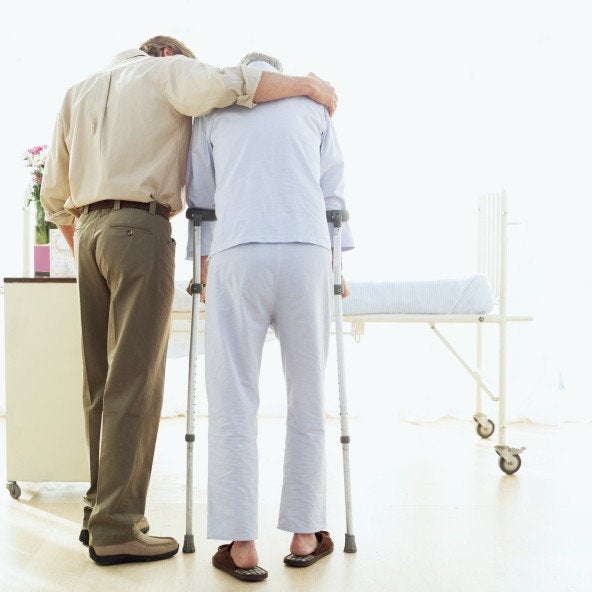
In my youth I was a ballet dancer. In recent years I have signed up for dance classes, and in my mind, I am capable of dancing at the same level and ability as my 18-year-old self. Sadly, my brain and my body have not kept in touch over the years and thus my brain receives a harsh reality check when I start to move and my body pays the price.
Serving in hospice care, I have learned that I am not alone in this mind/body disconnect. We see this disconnect in our hospice patients all the time and their bodies too pay the price, often in the form of falls. As clinical staff we assess for fall risk at every visit, but as many of my hospice colleagues across the country could attest, the odds of hospice patients falling seem to be stacked against us. Each hospice patient comprises a perfect storm for falls due to the unique and complex layering of personal symptomatic factors, environmental factors as well as perceived goals for movement.
For example, we would consider a patient who presents with any two of these factors to be at high risk for falls:
- Diminished eyesight or hearing
- Frequency of urination or incontinence
- History of syncope
- Multiple medical diagnoses
- Orthopedic devices used
- Unstable gait/unstable balance
- Drug/alcohol withdrawal
- Confusion/disorientation
- History of recent falls
- Sedation
- History of agitation
Most of our patients present far more than two of these factors, and how well these factors can be managed depends on the patient's unique home environment and on the abilities of the patient's caregiver. Each home with its rugs and cords and furniture and narrow doorways transforms into a patient's obstacle course in seconds. Our professional staff cannot be in every home all day every day, so the patient depends on the intricate web of caregivers who surround him or her. Many of our caregivers are elderly themselves and almost all are not trained professionals. Many have never imagined helping their mom or spouse with toileting, bathing, or merely standing.
To complicate the situation even more, our hospice team values the wishes of each patient and thus tries our best to match interventions with the level and types of activities the patient would like to do from the highly mobile activities such as gardening or driving to the basic activities of daily of living such as bathing and toileting. We see that falls start occurring when the patient's mind tells them they can do a certain activity that their body has decided is no longer possible. Falls tend to increase when the caregivers are also in denial that physical decline is happening. Caregivers struggle to accept that someone who once was self-sufficient and strong can no longer do simple tasks such as standing, walking or toileting unassisted.
In a recent conversation with Dr. Robert Zieve, he mentioned that in his clinic he talks with patients about how illness offers us an opportunity to become a new person by grieving abilities that are now gone and by learning to live in new ways. His comments made me wonder if fall prevention in hospice patients could become less of a medical intervention and more of a psychosocial/spiritual intervention. A fall risk assessment remains important but perhaps we need to offer a psycho-social and spiritual intervention as well. A funeral for driving, a litany for running, a lament for the bed bound.
As hard as it is to accept, I believe we will never cure the mind and body disconnect that inevitably happens as the body's physical abilities decline and frailty makes a home. Patients and caregivers need an outlet to grieve lost abilities by naming what can no longer be done. In grieving what has been lost, perhaps a space for celebrating the development of new ways of living day by day despite frailty and decline may arise. In the end, we could hope to prevent the suffering that often follows a fall as well as give rise to new, realistic expressions of life.